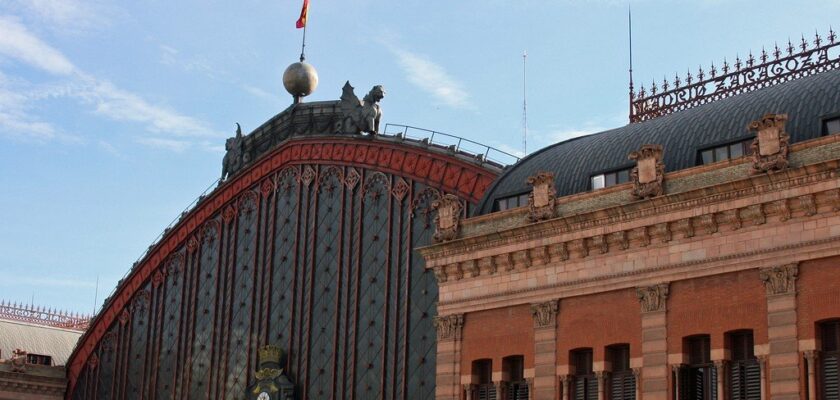Atocha Station
Atocha Station is Madrid’s largest rail hub, which along with Chamartín Station provides all rail transportation in the Spanish capital. Madrid’s oldest station bears the name of the Atocha city gate, which was demolished in 1851. Notably, the Spaniards use the word “atocha” to refer to a low-growing shrub that blooms with small bright yellow flowers.
.
The station attracts tourists with its graceful old building, which was built by Gustave Eiffel’s pupil Alberto de Palacio. Atocha Station is located in the historic center of the city and is adjacent to the Prado Boulevard and Museum, the central Puerta del Sol square and the Arenal pedestrian promenade, which leads to the royal palace.
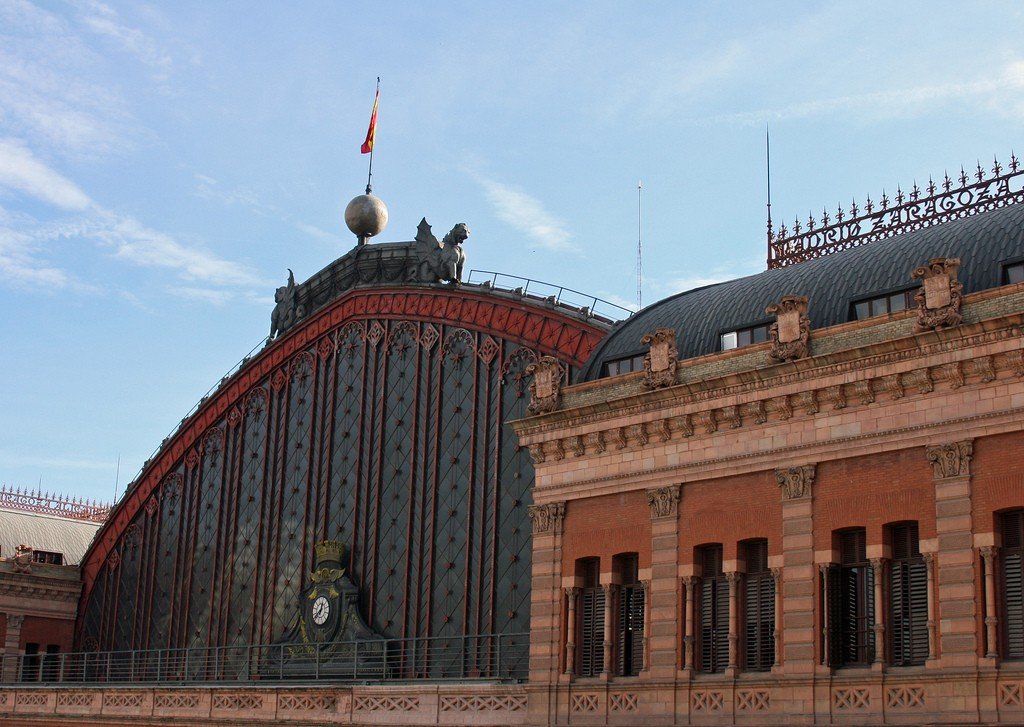
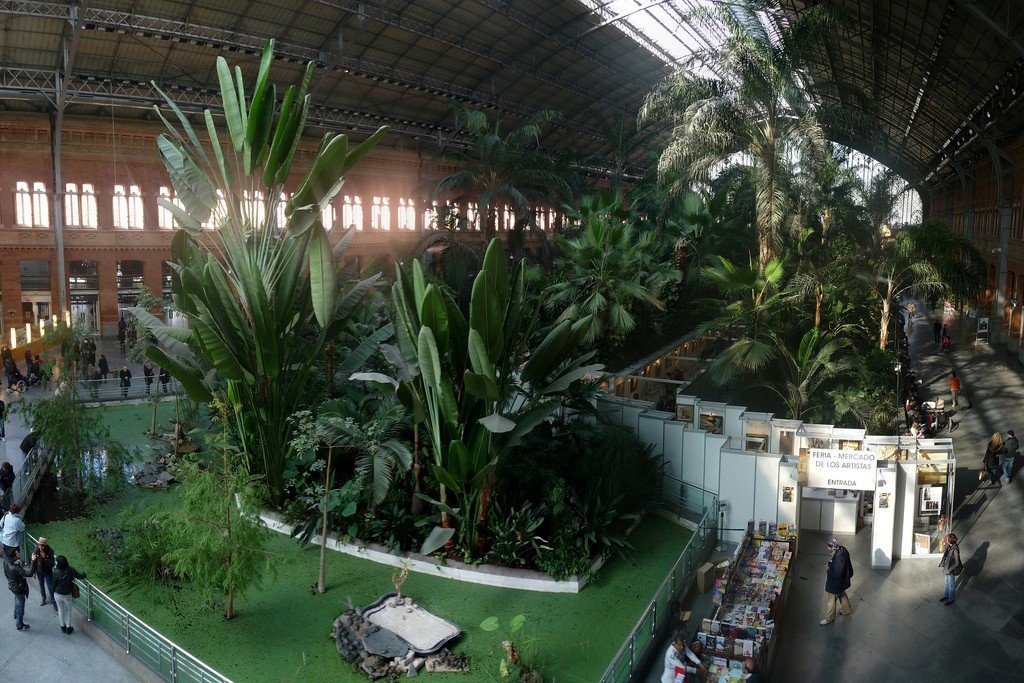
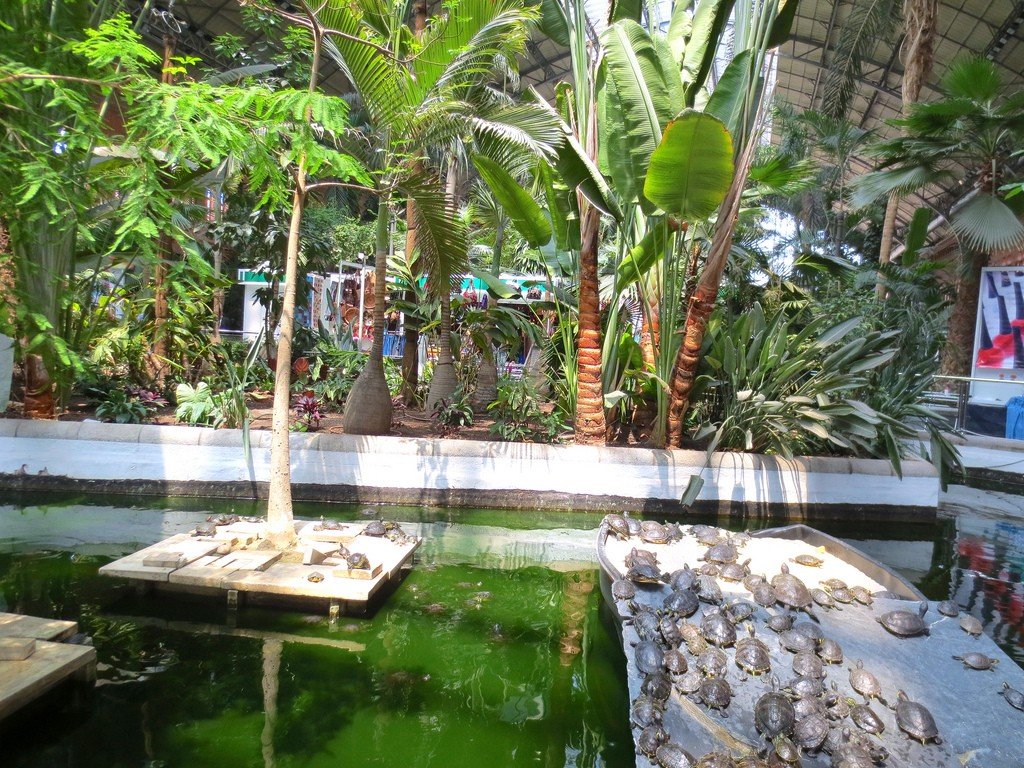
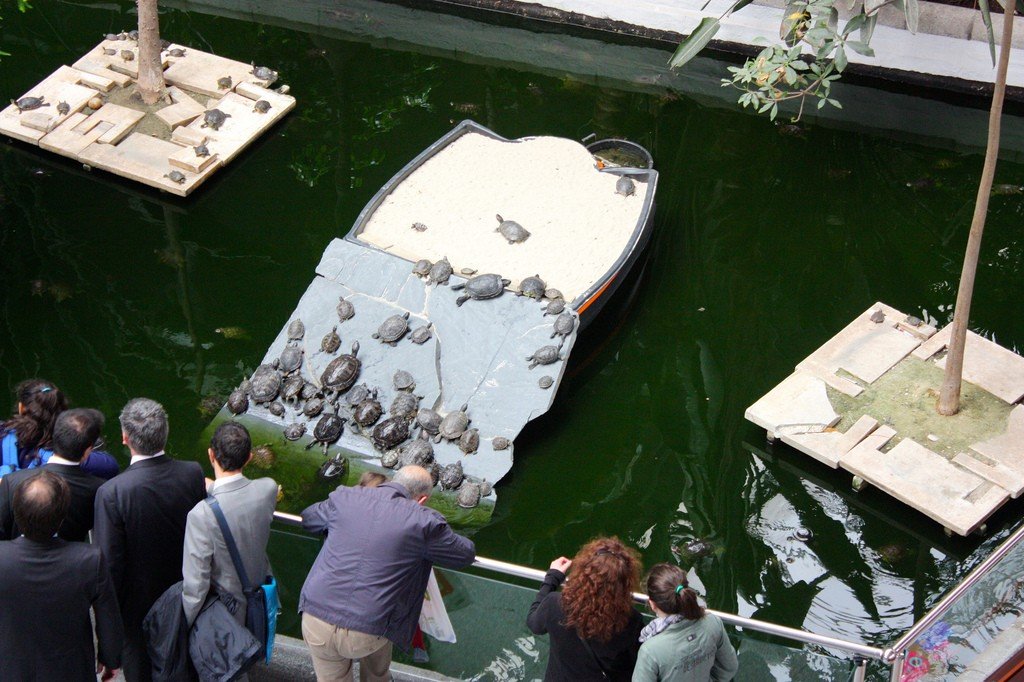
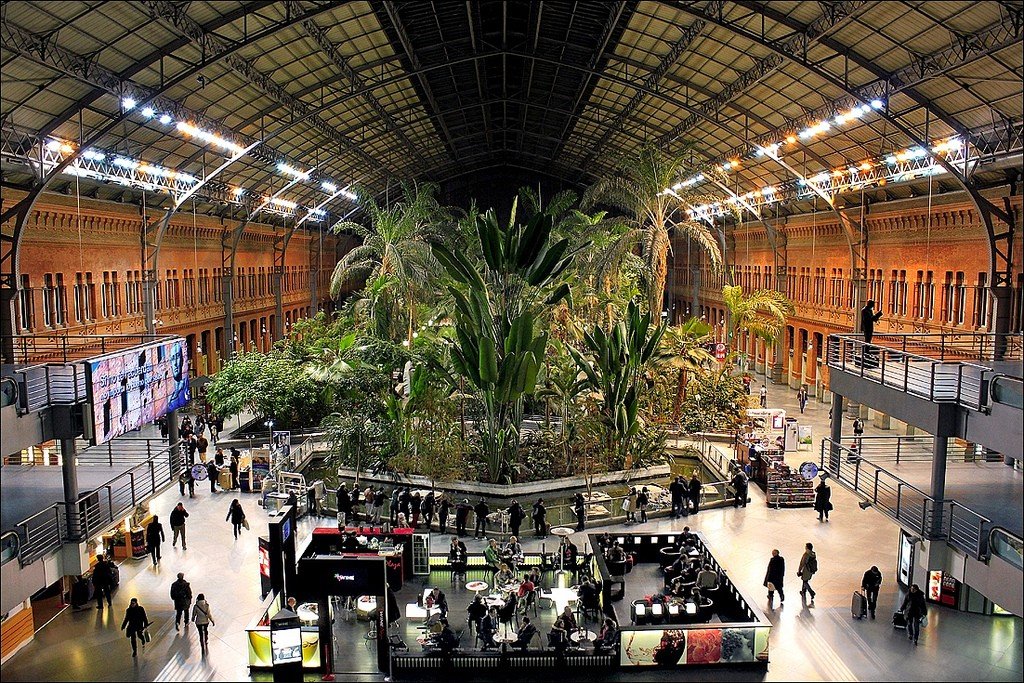
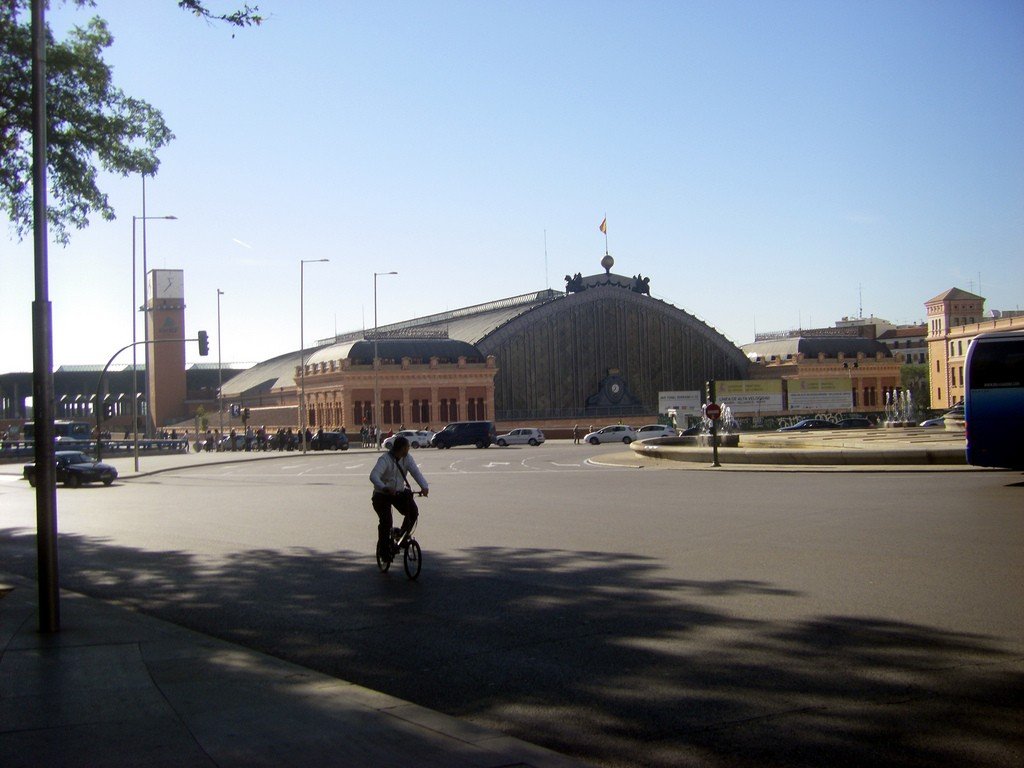
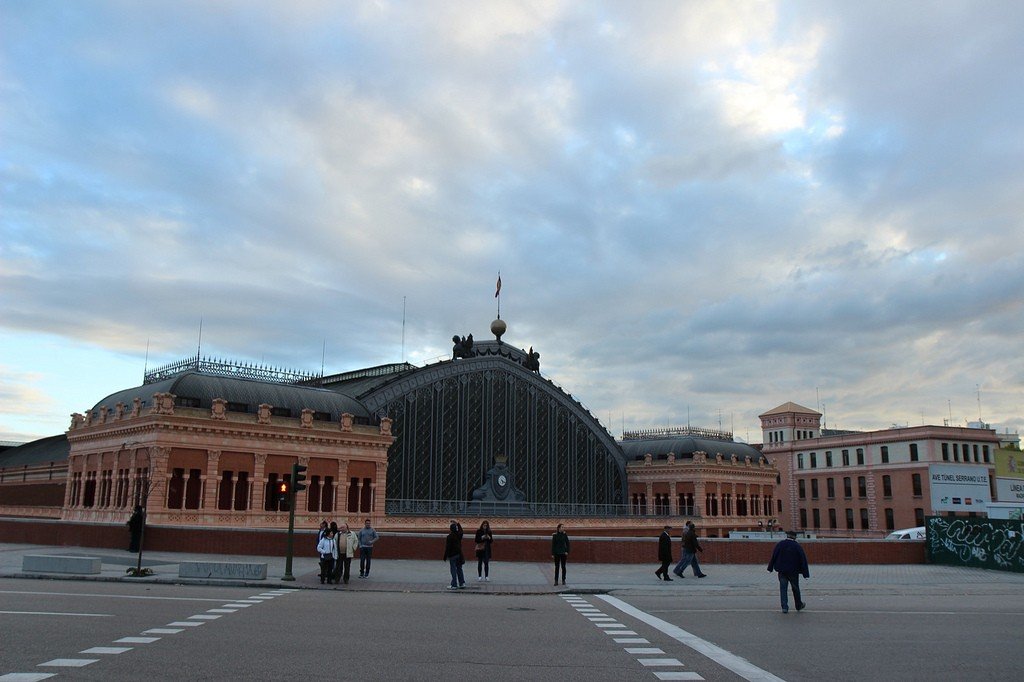
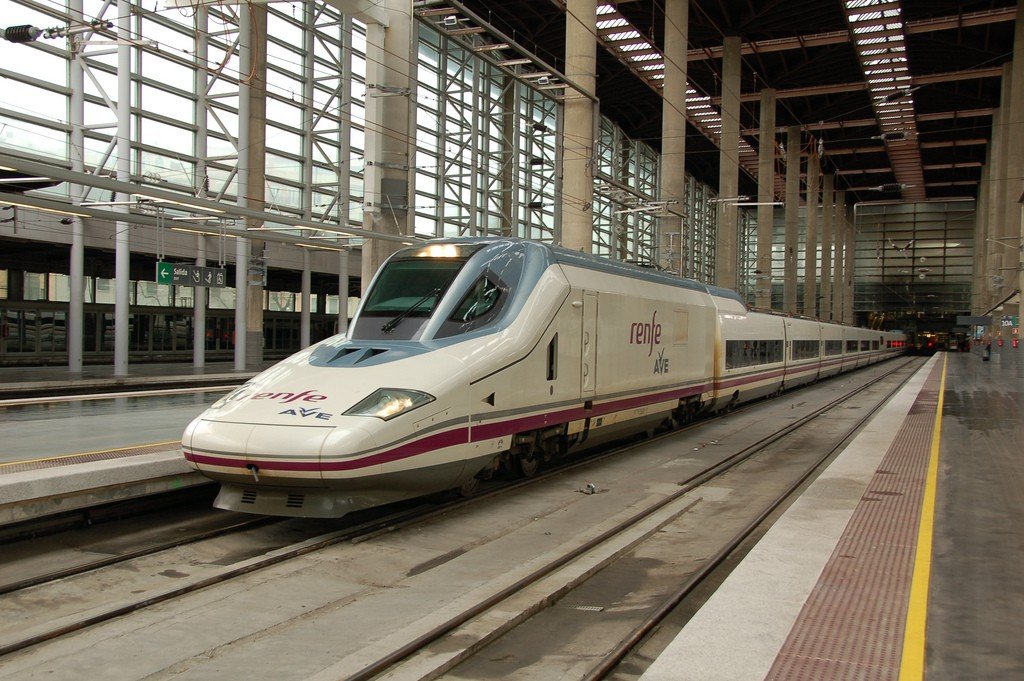
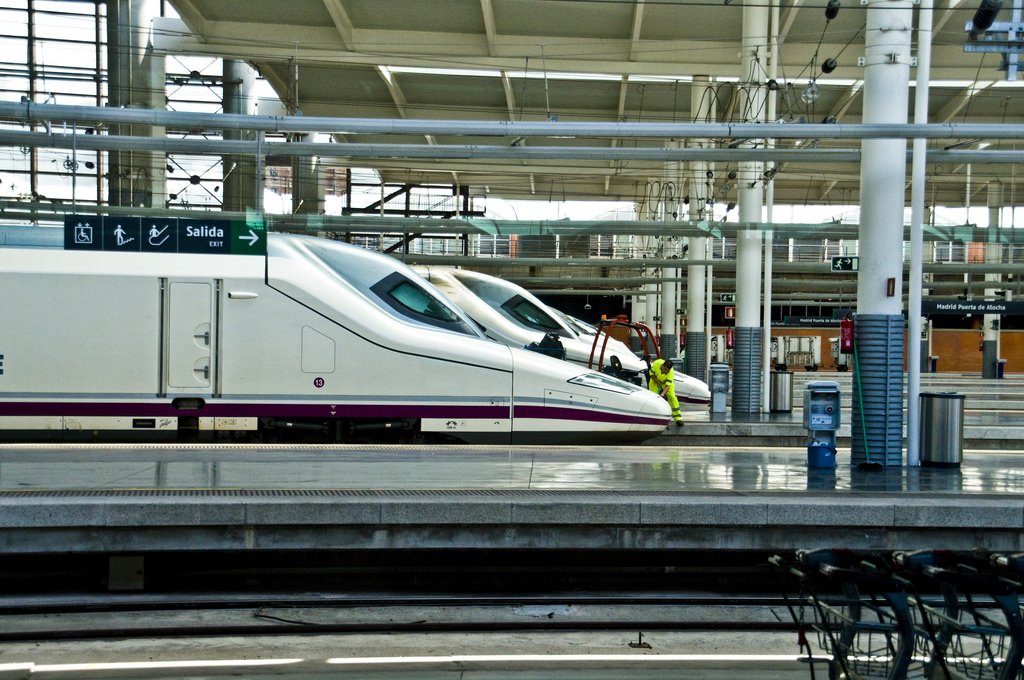
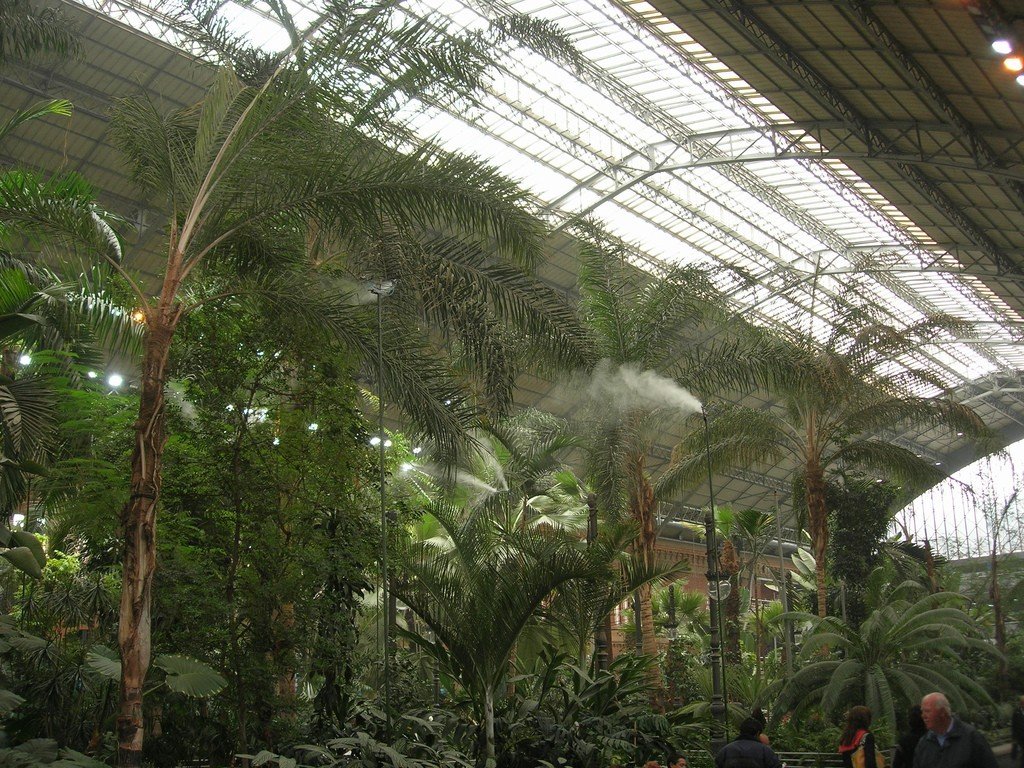
Video: Atocha Station
ContentsHighlights
These days, the historic building, built in 1892, has no platforms. After the latest renovation, a public space was created inside it. On the first floor of Atocha Station, under a huge light dome, there is a large tropical garden where passengers can spend a pleasant time while waiting for a train. Restaurants, cafes and stores are also open here.
.Spaniards are not indifferent to modern sculptures, so they decorated the halls and exits of the station with a variety of monuments. Among them are many unusual ones, such as a sculpture depicting a commercial agent, or two huge baby heads. The one with open eyes symbolizes the day, and the head with closed eyes symbolizes the night. The author of the original sculptures is the talented Spanish artist Antonio Lopez Garcia.
.From the very early morning, Atocha Station is crowded. The hustle and bustle reigns on all its levels. To make it easy for passengers to move from floor to floor with bulky luggage, there are long inclined travolators. The escorts can only go to the turnstiles, and only ticketed passengers are allowed to go to the platforms where trains leave. These rules were introduced in Madrid after the unfortunate events of 2004, when a series of terrorist attacks took place at the station, resulting in the deaths of many people. Passengers now go through a triple check with mandatory baggage screening.
.History of Atocha Station
In 1851, Madrid began construction of a new train station. In order to free the area for construction, the ancient Atocha Gate, which in the Middle Ages had been part of the southeastern part of the Madrid wall, was demolished.
>The station that was built was called the Noon Station or Estación de Mediodía. After a fire that severely damaged the station, it was reconstructed. At the turn of the XIX and XX centuries, railroads were very popular throughout the civilized world, so their construction was carried out with great scope, and station buildings resembled luxurious palaces with richly decorated facades. The author of the project of the new station, built in 1892, was architect Alberto de Palacio and project engineer Henry St. James.
.Rail service
Atocha Station has 13 platforms and 24 tracks. It ranks first in terms of traffic within Spain and second in terms of traffic to neighboring countries. Every day, this station serves about 250,000 passengers, and the number reaches 90 million passengers per year.
.
From 5.00 to 24.00, trains and trains depart from Atocha Station in the south, west and east directions. Trains departing from here run on regular, fast and high-speed lines. They can take passengers to Toledo, Guadalajara, Segovia, Cuenca, Avila, Aranjuez, Escorial and Alcalá de Henares. In addition, the station serves as a huge transportation hub where the masses transfer to the metro and buses. Every day, 150,000 people travel to Atocha Station from the agglomeration around the Spanish capital to study and work in Madrid.
.From the Puerta de Atocha terminal, which is part of the station, high-speed trains travel to Barcelona, Malaga, Cadiz, Cordoba and Seville. AVE trains cover the 630 km distance between the Spanish capital and Barcelona in just 2 hours and 38 minutes, and they take less than 2 hours and 30 minutes to travel the 535 km to Seville. On such routes, there is an unprecedented rule for the world rail network: if a high-speed train is more than 5 minutes late, passengers receive a full fare refund..The exits to the trains resemble modern airport gates. Passengers waiting for their trains are seated in cushioned armchairs. The walls in the waiting room are stylized to look like a high-speed train, with landscapes of sunny Spain “floating” behind the windows.
.
Botanical Garden
The renovation of Atocha Station, carried out in 1992, was led by renowned Spanish architect Rafael Moneo. It was he who came up with the idea to erect on the first floor of the station a 27-meter-high hall and a tropical garden, where the temperature of +24 ° C is maintained all year round. The unusual place immediately appealed to the guests of Madrid and turned into a popular tourist attraction. Find yourself among the sprawling palms and flowering plants is especially pleasant in the summer heat, when the air temperature in the Spanish capital rises to +42 ° C in the shade.
.
If in other parts of the world arriving passengers are greeted by porters and annoying cab drivers, in Madrid a beautiful tangle of tropical greenery awaits them. The dimensions of the glass dome allowed them to install elegant lanterns underneath and plant more than 7 thousand tropical and subtropical plants brought from . The botanical garden has long benches for those who want to relax, and a light haze from humidifiers hangs in the air. Residents and visitors love to stop by the station greenhouse to admire the fountain and artificial lake, where 22 species of exotic fish and many small, agile turtles live.
How to get there
Atocha Station is located south of the city center. Its facade faces the square of Emperor Carlos V. The station building is connected to two stations of the Madrid Metro “Atocha Renfe” and “Atocha”.
.
